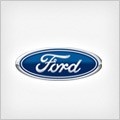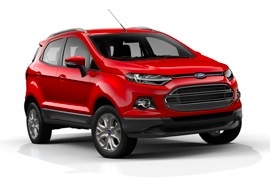
FORD EcoSport
Generations Timeline, Specs and Pictures

Ford introduced a heavily facelifted version of the EcoSport model in 2017, which completely transformed the car.
The first generation of the EcoSport was designed and produced in Brazil, and it sold well, but it was available only in a few countries. Then, for the second generation, Ford produced it in more locations and made the EcoSport available in more countries, including Europe. It wasn’t precisely what the Europeans were looking for on a small-sized crossover until 2017 when the blue-oval brand introduced the facelifted version.
With a heavily improved design, the 2017 EcoSport featured a new front fascia with a grille inspired by the European Mondeo lineup. Its angular headlights, swept-back to the sides, and corner-mounted turn signals made the little crossover look more aggressive. On the sides, the ascending beltline was adorned by a chromed line toward the C-pillars. The only old feature that couldn’t be re-worked was the tailgate, which was side-hinged.
Inside, Ford prepared a modern interior with a SYNC infotainment system on top of the center stack. Its three-spoke steering wheel with buttons on it was also new. The carmaker installed a TFT display between the speedometer and tachometer for the on-board computer in the instrument panel. Since it shared its platform with the Fiesta, it didn’t have a long wheelbase but still offered adequate room for the rear passengers.
Under the hood, Ford installed modern engines, including the awarded 1.0-liter EcoBoost. It was no longer a car for the emerging markets only.

Ford introduced the 2012 EcoSport as a B-segment crossover for global markets, starting with Brazil and ending with the North American continent in 2018.
While EcoSport’s first-generation competed in the South American market, its successor flexed its muscles globally. Ford built it on top of the 2011 Fiesta platform but adapted the rest of the vehicle to look like an SUV.
Its tall front area sported a wide, octagonal grille with chromed accents. Above it, on the sides, the designers placed the narrow headlights and lower, in the bumper, the fog lamps. An unpainted apron surrounded the bumper’s base, creating the image of an SUV. On its sides, the door mirrors mounted on tall stalks and the tall greenhouse enhanced the car’s look like a more capable off-road inspired vehicle, while in the back, the car featured a side-mounted tailgate with the spare wheel attached to it.
Inside, the carmaker installed cheap materials and a bland-looking interior with various shades of gray and black. The dashboard looked better than the rest of the vehicle since it was inspired by the Fiesta, although with lower-quality materials. Thanks to the high-mounted seats, the EcoSport provided adequate room for four passengers, but it wasn’t easy to put three adults in the back due to the car’s narrow bodywork. Its trunk was smaller than on the Renault Captur or Nissan Juke, but the rear seat’s seatback expanded it up to
Under the hood, the carmaker bragged about its inline-three engine, named EcoBoost. It was a turbocharged 1.0-liter powerplant that won the “Engine of the Year” award. A 1.5-liter turbo-diesel completed the range.

The need for a cross-over car class appeared when people needed a car that could tackle unpaved or bad roads.
Thus, Ford of Brazil launched the first EcoSport in 2003.
To make the car cheaper to build, the engineers from Ford of Brazil took whatever they could from Ford’s parts inventory. They found the Fiesta MKV platform (Ford B3 platform) as the best choice. In Europe, that was used for the little Ford Fusion. In Europe, the Fusion was a completely different car than in the U.S. So, they took most of the car, but changed the rear and installed new engine options.
Inside, the 2004 Ford EcoSport featured minimalist functions, to keep the car price low. It could feature an air-conditioning system, central locking, power steering and brakes, ABS, and power windows. For the braking system, the EcoSport relies on front disc brakes and rear drums.
The engine choices for the EcoSport varied from a small but fuel-efficient 1.0-liter gasoline up to a powerful 2.0-liter. There also was a 1.4-liter TDCI (diesel) engine, available for some markets. It was based on the same unit available in Europe, a joint-venture development between Ford and PSA (Peugeot-Citroen group).
In 2007, the Ford EcoSport has received a mid-life cycle update and it lost its base 1.0-liter version and the gasoline/methanol 1.6-liter unit was the replacement base engine.























































